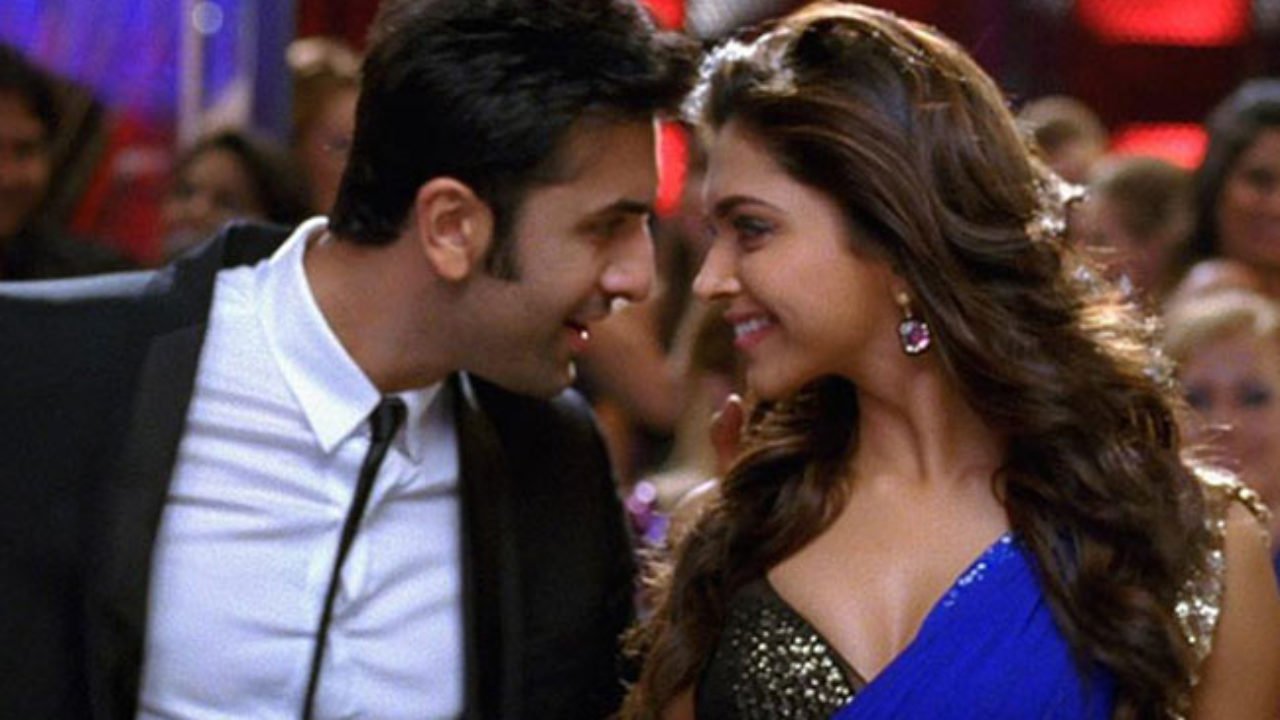Editor’s Note: FII’s #MoodOfTheMonth for November, 2021 is Popular Culture Narratives. We invite submissions on various aspects of pop culture, throughout this month. If you’d like to contribute, kindly email your articles to sukanya@feminisminindia.com
“One is not born, but rather, becomes a woman,” said feminist philosopher, author and academic Simone de Beauvoir. Well, how? Through deep-rooted sexism and patriarchal gender roles, of course. Since the beginning of time, patriarchy has managed to sustain itself and reinforce gender roles through one medium or another.
In the present times, the media is one of the most popular and convenient vehicles of reinforcing gender roles in the society. One does not have to look very far for sexism and gender inequality, it is present all around us, be it in books, movies, advertisements, or anywhere else. Bollywood movies, in spite of being cheesy romantic, have perpetuated gender inequality, misogyny, sexism and homophobia in many different ways. In movies like Kabir Singh, the misogyny is obviously unignorably direct. In movies like Thappad, the theme of subjugation of women is brought out in a feminist light. But there are a vast number of movies where this subjugation is so “invisiblised” that we do not even recognise it.
Yeh Jawaani Hai Deewani (2013) is one among the most popular Bollywood films that reinforces problematic gender roles in a way so subtle that it keeps the audience swooning. The film starrs Ranbir Kapoor (as Kabir aka Bunny) and Deepika Padukone (as Naina) in the lead, along with Aditya Roy Kapoor (Avi) and Kalki Koechlin (Aditi). Naina is an introverted, shy medical student who carries a book with her even while grocery shopping, and wears a “chashma”. From the very beginning, a dichotomy is established between the good woman and the bad woman. Aditi’s character is clearly juxtaposed to Naina’s as she comes across as being loud, extroverted, and fun while Naina is portrayed as studious, boring and simple.

Aditi is looked down upon by Naina’s mother as she says in a casual misogynistic remark, “We ran into Naina’s friend today. What a sight she was. Dirty, torn clothes. And she had these giant headphones around her neck. Wild! Totally weird.” In the same scene, she goes on to casually say, “Young girls who have a lot of fun get pregnant”. This dichotomy is taken further through small details where both of them are caricatured as binaries.
Everything from their clothes to their nail color sit well with the binaries they’re placed in. Naina, being the good, pious woman, wears plain clothes like cardigans and nude nail color. Aditi, on the contrary, wears leather jackets, hipster clothes, and black nail polish. Aditi is secretly in love with Avi who, of course does not show any interest in her, because she’s not “feminine”.
Her career remains invisible. All that matters about her is her looks, her personality, and her relationship with Bunny. In the first-half of the movie, Naina is portrayed as a damsel-in-distress, feeling like an outcast among people who like to have fun. She needs Bunny (the cool guy)’s validation to feel good about herself and that is where the “romance” begins. During a particular episode when they climb the Bhuta mountain, Naina wishes for one thing, quite simple, just one word: Bunny. So, the hero is established as “the ultimate prize” that the girl can wish for
Objectification of women, in the name of humor, is prominent in the film. Bunny’s character is introduced in an item song “Ghaghra” starring Madhuri Dixit, out of nowhere. Moreover, Evelyn Sharma’s character Lara is portrayed as a good-looking, not so intelligent girl with a “perfect” body, with whom everybody flirts. She has a shrill voice, weird accent, and is seen as an object rather than a human, making occasional appearances throughout the movie.
At some moments, Naina is juxtaposed with Lara as well, reinforcing the dichotomy over and over again. During one of the “romantic” episodes of the film, Bunny tells Naina, “Girls like you aren’t made for flirting. You’re made for love.” During their Manali trip, in a very short episode, Bunny runs into a random girl and casually looks at her rear while she walks away. There is no dearth of sexist comments which are supposed to be humorous. “Not a single mountain girl shall be spared”, plan Bunny and Avi while leaving for their Manali trip.
Also read: Harassment In Films: Bollywood’s Constant Normalisation Of Toxicity As Love

Coming to the plot of Yeh Jawaani Hai Deewani, it does not shy away from reinforcing gender roles. Bunny’s character basically screams the age-old “men will be men” idea. He is a ‘charming womaniser‘ who flirts with every woman he comes across. He plays the role of a man-child who hurts everyone around him in the name of his ambitions and self-discovery.
He behaves rudely to his stepmother and practices detachment from all the people who love him (his father, Naina, his best friends Avi and Aditi). His ambition and his thirst to travel are glorified to the extent that the plot ends up revolving around his career. His career is the most important thing for him. On the contrary, despite Naina being so studious and sincere, we don’t get to hear much about her medical career. She mentions her “clinic” in a fleeting moment during the second-half of the movie, that’s all.
Towards the end, Bunny is adamant on following his ambition until he realises he’s in love with Naina and does not want to lose her. On New Year’s Eve, he goes to her house, and obviously, she’s there while everyone else is partying. He proposes to marry her but she’s anxious that he will run away, to which the hero replies, “I still want the same things but now I want them with you. I still want to see every corner of the world but while holding your hand.” The audience goes “aww” at the happy ending as the movie ends with their embrace. Perhaps the question that went unasked and unanswered is the one about Naina’s career and the clinic she fleetingly mentioned
Her career remains invisible. All that matters about her is her looks, her personality, and her relationship with Bunny. In the first-half of the movie, Naina is portrayed as a damsel-in-distress, feeling like an outcast among people who like to have fun. She needs Bunny (the cool guy)’s validation to feel good about herself and that is where the “romance” begins. During a particular episode when they climb the Bhuta mountain, Naina wishes for one thing, quite simple, just one word: Bunny. So, the hero is established as “the ultimate prize” that the girl can wish for.
Halfway into the movie, Naina falls in love with Bunny. Consequently, she replaces her “chashma” with contact lens and somehow goes from being awkwardly shy to being an outgoing person who drinks bhaang and dances on stage. During the second-half of the movie, her whole personality is magically transformed, and it is then that she is objectified as Bunny splashes champagne on her body casually. In another moment of implicit sexism, Bunny comes to her rescue when she’s anxious about her dance performance at the Sangeet as if a woman cannot really do anything by herself.
Throughout Yeh Jawaani Hai Deewani, Bunny jokes about his casual relationships and condemns marriage but gets immensely jealous and insecure when Naina is meeting Vikram, implicating that what is acceptable for a man is not acceptable for a woman. While men can fool around and “have fun”, women are supposed to be coy. While men can afford to have huge ambitions, women can only be subjugated.

Naina and Bunny’s personalities are put in stark contrast throughout the film. While Bunny wants to travel and see every corner of the world, Naina wants a simple, peaceful life.
Bunny: “I could never live like you guys.”
Naina: “This is the life I’ve chosen. I have no interest in living like you.”
Towards the end, Bunny is adamant on following his ambition until he realises he’s in love with Naina and does not want to lose her. On New Year’s Eve, he goes to her house, and obviously, she’s there while everyone else is partying. He proposes to marry her but she’s anxious that he will run away, to which the hero replies, “I still want the same things but now I want them with you. I still want to see every corner of the world but while holding your hand.” The audience goes “aww” at the happy ending as the movie ends with their embrace. Perhaps the question that went unasked and unanswered is the one about Naina’s career and the clinic she fleetingly mentioned.
By and by, both main female characters, Naina and Aditi get the only “happy ending” they can afford i.e., marriage. Bunny is seen as the ultimate prize that Naina gets. He gets to do what he wants: follow his ambition. Naina gets what she wished for: the charming hero.
Yeh Jawaani Hai Deewani is a perfect example of films that appear to be romantic and youthful, and end up achieving a cult-status, but layers of sexism and problematic gender stereotypes come flowing once we pay attention to the details. It is, therefore, important for us to observe how the content we consume for entertainment affects gender stereotypes in subtle and problematic ways.
Also read: Tip Tip Barsa Paani: An Example Of Bollywood’s Blatantly Ageist, Obsessive Male Gaze
Apoorva is currently pursuing her Master’s in English from Jamia Millia Islamia, New Delhi. When she’s not re-reading the letters by Virginia Woolf, she likes to try her hand at scribbling poetry. Her areas of interest revolve around Feminist Theory and Absurdist Fiction. She can be found brewing tea at midnight, complaining about our Sisyphean existence
Featured Image Source: Bollywood Bubble
About the author(s)
Apoorva is currently pursuing her Master’s in English from Jamia Millia Islamia, New Delhi. When she’s not re-reading the letters by Virginia Woolf, she likes to try her hand at scribbling poetry. Her areas of interest revolve around Feminist Theory and Absurdist Fiction. She can be found brewing tea at midnight, complaining about our Sisyphean existence




